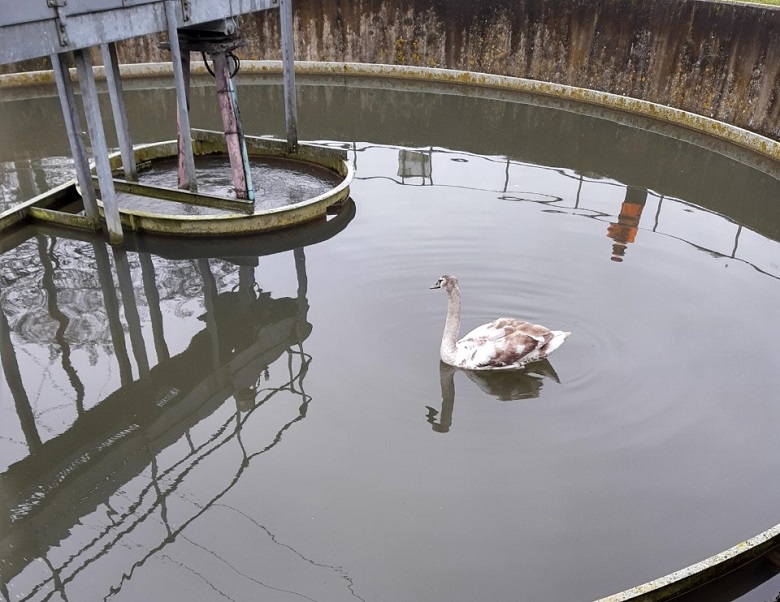Young swan rescued from sewage works
Monday 7th December 2020 10:54

An unexpected guest dressed in white has been rescued from Marlborough sewage works.
Thames Water engineer Simon Palmer was on a routine site inspection when he spotted a young swan swimming in one of the sewage tanks.
Realising there was not enough room in the tank for the swan to build up take off speed and fly out, Simon quickly contacted RSPCA Oak & Furrows Wildlife Rescue Centre to organise its rescue.
The local charity sent a wildlife officer to assist with the juvenile bird’s safe capture and release.
After coaxing the bird to the edge of the 10-foot deep tank, specialist equipment was used to retrieve the swan before it was released back into the River Kennet.
Simon said: “He seemed happy and content, but I knew he would be unable to take off in that small space. After a bit of fun and games, we managed to encourage the swan to where we could get it out safely without injury. We aim to look after the wildlife that make our water and waste treatment sites their home but, in this case, it was great to see the young fella back in the River Kennet where he belongs.”
This was not Simon’s first animal rescue. In 2016, at Swindon sewage treatment works where Simon normally works, he was involved in the successful rescue and release of a badger that had fallen into a storm tank.
Birds often visit sewage plants to eat the small insects which feed off nutrients found in the tanks.
Earlier this year, Thames Water donated an old shipping container to the RSPCA Oak & Furrows Wildlife Rescue Centre. The 40ft container now houses animal food, bedding and medical materials at the Wiltshire wildlife hospital.
Thames Water works to protect and enhance wildlife habitats on and around its operational sites and to open them up to the public where possible.
From 2020 to 2025 the company has committed to enhance biodiversity by five per cent at 253 of its most important sites for nature. The area of land to be improved by the programme is around 4,000 hectares – two-and-a-half times the size of Heathrow Airport.
This will be achieved by improving the condition of existing habitats through changes in grassland management, and with the creation of new habitats such as wetlands, woodlands and hedgerows.
